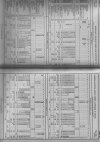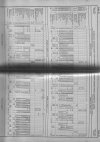The original electrification was on a
fourth rail system, similar to that now used by London Underground, which allowed LER trains to use the new line. Power was supplied from the railway's own power station at
Stonebridge Park until the 1960s when it was closed, after which it has been obtained from public supplies. As originally installed, there was provision for interconnection of the high voltage section of the power station to adjacent public supplies for output or intake but this ceased when national supplies were standardised at 50 Hz.
In the late 1950s, the
original electric multiple units built for the line were replaced by new
Class 501 rolling stock. These were in turn displaced in the mid 1980s by
Class 313 units. The line is now operated by London Overground
Class 710 "Aventra" units.
In the 1970s, the track and the rolling stock used on this line and the
North London Line were changed to use a modified version of the BR standard
third rail system, with the fourth rail (now bonded to the running rail used for returning traction current) left in place on the sections of line shared with LU Bakerloo line trains. North of Harrow & Wealdstone, now the limit of LU operation, the fourth rail has in most places been dropped onto the sleepers and remains bonded, thus leaving the resistance of the current return path unaltered. The fourth rail remains in the normal position from Queens Park to Kilburn High Road up platform, where a trailing crossover between those two stations is maintained in use to allow reversal of Bakerloo line trains unable to gain access to London Underground at Queens Park, due to planned work or other reasons. The line is currently electrified (like all shared lines) using the standard compromise voltage of 660 V DC. This falls comfortably within the lower permanent voltage limit for the
Class 378 "Capitalstar" stock (500 V) and the upper permanent voltage limit for the
1972 tube stock (760 V).
[2] The line has now been converted to 750 V DC for the new
Class 710 "Aventra".


